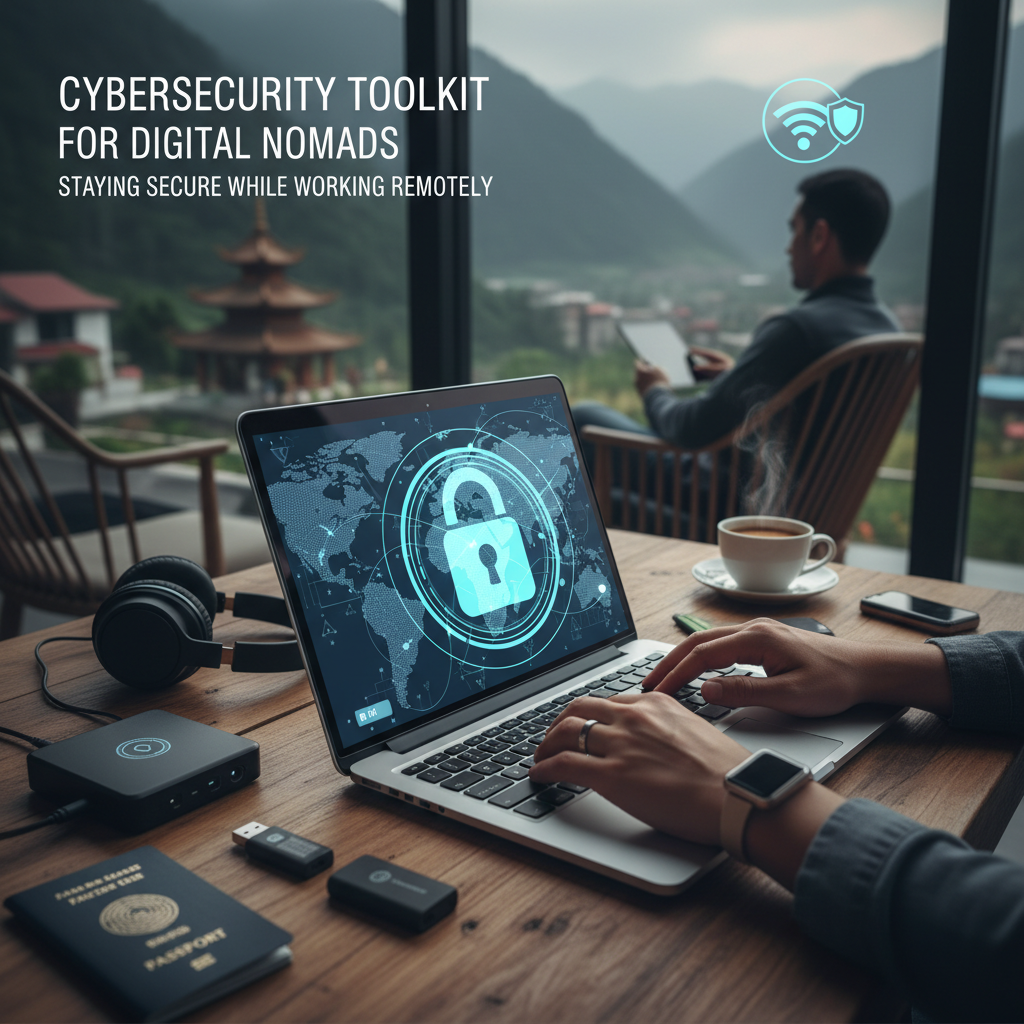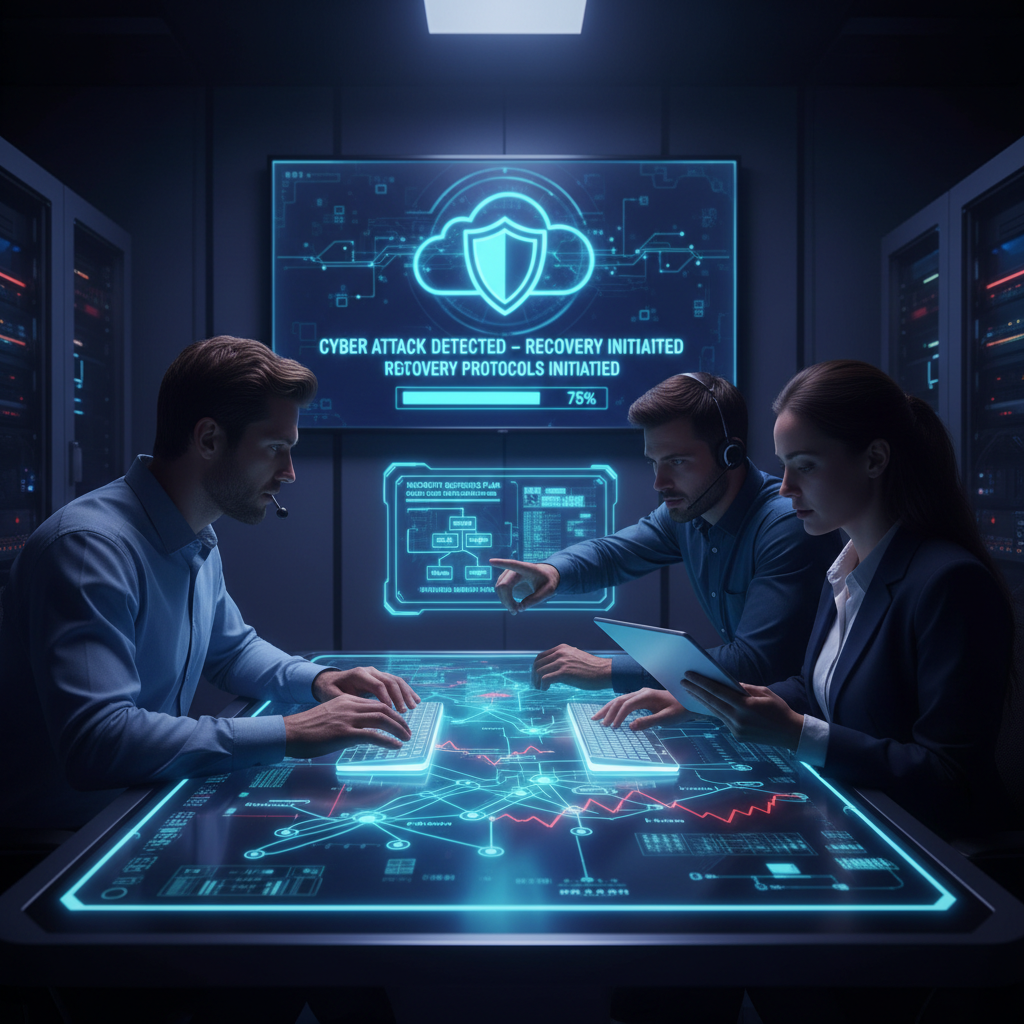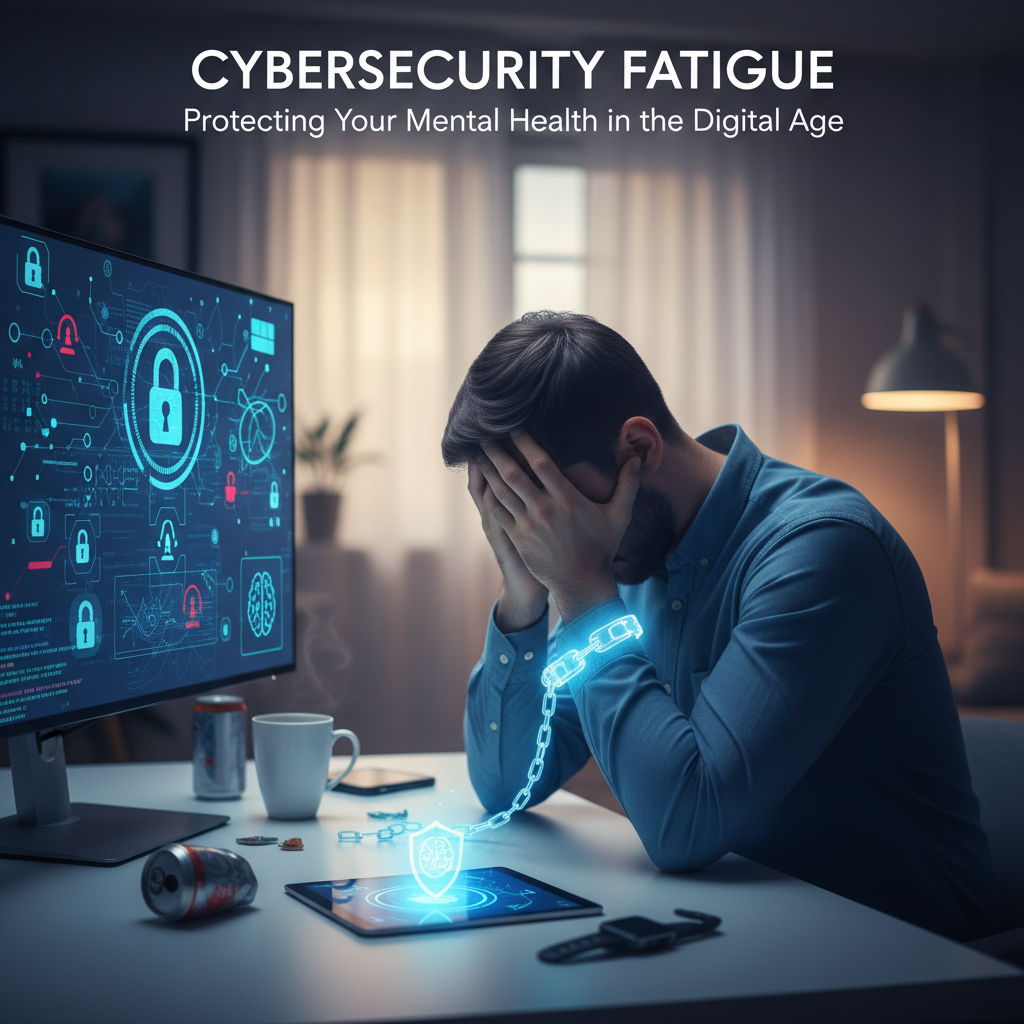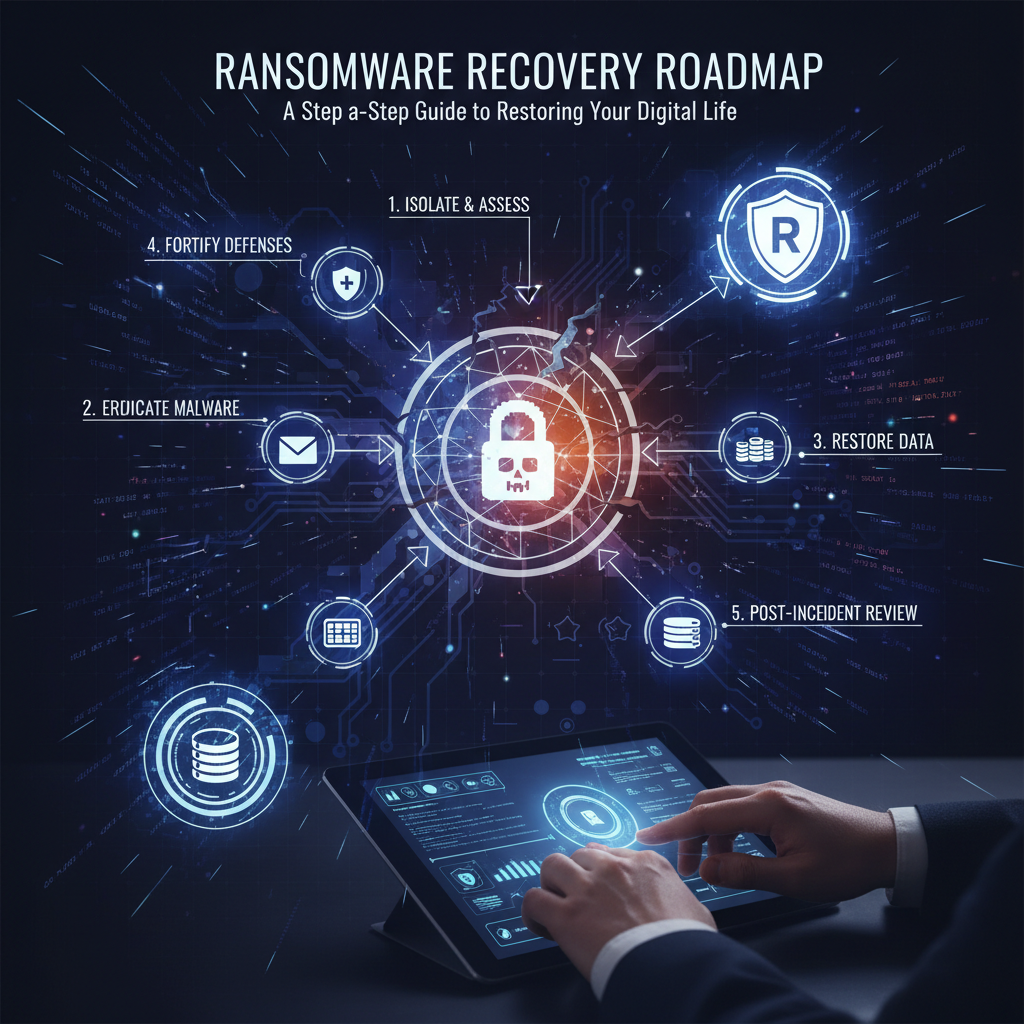This article is for IT leaders, HR managers, team leads, and hybrid employees who feel stretched thin — juggling security threats, privacy worries, and a creeping sense of burnout as work bleeds into home life — and who need realistic, prioritized steps to protect both data and mental health. You're worried about phishing, shadow IT, and the anxiety of being "always on" (you should be). Our team can help by translating cybersecurity essentials into human-friendly routines and policies that protect systems and preserve people's well-being — without turning every meeting into a compliance lecture.
What is "digital well-being" in a blended work environment?
Digital well-being isn't just about screen time counters or meditation apps. It's the intersection of secure technology, clear boundaries, and mental health protections that let people do their jobs without sacrificing privacy, sleep, or focus. In a blended work setup — where people work partly from home and partly in the office — risks multiply: devices hop between networks, home assistants sit next to work laptops, and colleagues expect instant replies.
Why that matters? Because poor digital habits create security gaps (easy wins for attackers) and stressors that erode productivity and morale — basically, you lose twice.
How does remote work security affect mental health?
Short answer: they’re linked. Remote work security failures — like compromised accounts or leaked documents — create stress, shame, and hypervigilance. But even routine security protocols can add friction (password resets, VPNs that slow everything down), and that friction can cause people to cut corners, which worsens risks. So it's a feedback loop.
From what I've seen, the teams that feel safest are the ones with predictable processes and supportive communication — not the ones that pile on more rules. Predictability reduces cognitive load. Fewer surprises, less anxiety.
What are the core components of hybrid work cybersecurity that protect digital well-being?
Here are the essentials — quick, actionable, and prioritized so you can hit the biggest wins first.
- Identity & access management — enforce MFA, reduce admin privileges, and adopt single sign-on (SSO). These changes stop 80% of credential-based attacks (yes, the math matters).
- Device hygiene — automatic patching, disk encryption, endpoint detection and response (EDR). If a device gets stolen or infected, containment should be instant.
- Network controls — use a business VPN or a zero-trust access model for sensitive apps; segment guest and IoT traffic at home where possible.
- Secure collaboration — enforce DLP on cloud storage, set default sharing to "private", and train people to avoid copying secrets into chat apps.
- Privacy & consent — transparent monitoring policies and opt-in guidance (so employees know what's collected and why).
- Psychological safety — clear incident reporting without blame, and policies that allow taking time off after a security incident.
How to prioritize those controls?
Start with identity (MFA + SSO), then device hygiene, then data controls. Why? Because identity is the key to everything — once an attacker has credentials, they move fast. Fix identity and you shrink the attack surface quickly.
What practical habits protect individual digital well-being?
People want simple rules they can remember at 2 a.m., after a red-eye. So make the habits tiny, repeatable, and friction-friendly.
- One password manager — use it, trust it, and require unique logins for work accounts.
- Set boundaries — hide work chat notifications outside core hours (yes, even for managers).
- Device separation — if possible, keep personal shopping and work tasks on separate profiles or devices.
- Micro-checks — a 90-second routine when you start work: lock your screen, connect VPN, check inbox for security alerts.
- Digital detox moments — schedule 30-minute focus blocks without notifications (people actually do better work this way).
And here's something counterintuitive: simplify. Remove unnecessary apps and extensions. It's like decluttering your desk — but for risk.
How should organizations design policies that support both security and mental health?
Policies that read like legal contracts get ignored. Policies that solve real pain points get followed. So design for humans first.
- Make rules context-aware — stricter controls for finance and HR systems, lighter ones for general docs.
- Focus on outcomes, not micromanagement — require secure outcomes (encrypted device, MFA active) rather than dictating every step.
- Embed "why" — short sidebars in policy docs explaining the reasoning help adoption (people accept rules if they feel reasonable).
- Offer alternatives — if a policy blocks someone, give a fast exception process plus support — don't just tell them "no".
- Measure psychosocial impact — survey employees after major security changes to track stress and friction.
What about training and culture?
Don't run annual compliance theater. Run short, scenario-based trainings every quarter — 10-15 minutes, with real stories (phish examples, near misses). Use praise: call out people who reported suspicious emails. Recognition changes behavior faster than punishment.
How do technical approaches like zero-trust or VPNs fit into digital well-being plans?
They matter — but they shouldn't be the only thing. Zero-trust (identity-first access) reduces reliance on perimeter defenses that break down in hybrid work. But zero-trust tools can add steps (device checks, frequent re-auth) — so implement with UX in mind.
Use progressive rollout: pilot zero-trust for one business unit, measure helpdesk calls, then tune. That's how you avoid creating friction for hundreds of people at once.
How to balance work-life cyber without cutting security corners?
Balance is a process, not a policy. You can have strong security and sane work boundaries if you wear both hats.
- Protect core assets — tighten controls on critical systems so you can loosen them elsewhere.
- Time-box sensitive tasks — schedule high-risk work (financial transfers, admin changes) during monitored hours.
- Automate safeguards — auto-expire shared links, auto-lock idle devices, auto-encrypt sensitive uploads.
- Leader norms — leaders should model offline hours (if the VP emails at 10pm, people reply).
Leverage tech where it reduces anxiety: automated backups, easy password resets, "I'm locked out" hotlines with human response — these small comforts matter more than people think.
What are quick wins you can implement this week?
Want tangible progress fast? Do these five things:
- Enable multi-factor authentication across all corporate accounts (start with admins).
- Deploy a managed password manager and migrate the executive team first.
- Push critical security patches to endpoints automatically.
- Publish a one-page "remote security playbook" for employees — include easy steps and support contacts.
- Set a company-wide "no meetings" focus block for two hours a week to protect cognitive bandwidth.
These moves improve security and reduce day-to-day friction — a rare win-win.
How can teams measure success for digital well-being and hybrid cybersecurity?
Mix technical metrics with human signals.
- Technical: reduction in compromised accounts, mean time to detect/respond, percentage of devices with encryption, MFA adoption rate.
- Human: employee stress scores related to IT, helpdesk satisfaction, number of reported suspicious emails (higher is good), average after-hours response time.
Track both. If security improves but stress spikes, you've got a one-sided program. Fix that fast.
What to do if a security incident impacts mental health?
Be direct and humane. Quick steps:
- Open a no-blame channel for affected employees — let them ask questions without fear.
- Offer counseling or time off if the incident caused significant stress.
- Communicate transparently about impact and remediation — silence breeds anxiety.
- Run a retrospective that includes psychosocial learnings (what stressors popped up, how to avoid them).
How our team helps (without being pushy)
If this feels overwhelming, our team can map your current state in a single week, prioritize the top three security fixes that reduce anxiety and risk, and create a short training program for frontline staff — no jargon, just steps people will actually follow. We often start with identity controls and a one-page playbook, because those provide immediate payoff and restore confidence quickly.
Quick checklist: Protect digital well-being in a blended workplace
- Enable MFA everywhere
- Use a corporate password manager
- Auto-patch devices and encrypt disks
- Segment networks (guest/IoT vs. work)
- Publish a short remote security playbook
- Schedule protected focus time weekly
- Run short, realistic training quarterly
- Measure both security and stress
FAQ
How is digital well-being different from regular cybersecurity?
Digital well-being blends cybersecurity with human factors like boundaries, cognitive load, and privacy. Cybersecurity alone focuses on technical defenses; digital well-being asks whether those defenses are practical and whether they protect people's mental health while protecting data.
Can strict security policies harm employee mental health?
Yes — if they're applied without context or support. Strict rules that create friction, outage-prone tools, or punitive enforcement increase stress. Good policies are context-sensitive, include exception paths, and offer support when people hit problems.
What’s the minimum tech I should enforce for remote workers?
MFA, disk encryption, auto-updates, and a password manager. Add VPN or secure access for sensitive apps. Those basics stop most common attacks and are quick wins.
How do we encourage employees to report suspicious activity without fear?
Create a no-blame reporting culture, recognize people who report (publicly, if they’re comfortable), and provide a fast, friendly response from IT so reporters feel heard. Make reporting as frictionless as possible — a single button in your chat or an email alias works.
How often should we review digital well-being policies?
Review at least twice a year and after every major incident. But check human impact quarterly — short surveys and helpdesk feedback will tell you whether policies are working in practice.





